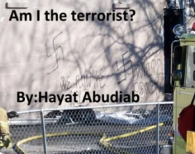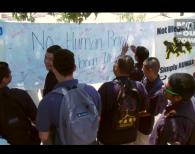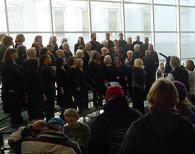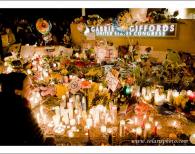Not In Our Town: Light in the Darkness is not just a film, but the beginning of a conversation.
Here at The Working Group, we aim to produce films that serve a diverse audience with a shared goal: to make our communities safer and accepting of all. Not In Our Town: Light in the Darkness was not only broadcast nationally on PBS stations, but nearly 20 public media stations hosted relevant content and events in their respective markets. Nearly 30 national partners and allies—including the Department of Justice COPS, The National League of Cities, American Library Association, National Hispanic Media Coalition, and the Interfaith Alliance—shared the film with their constituencies. And at any hour of the day, our social media channels provided resources and space to connect around these important issues.
Blog

January 23, 2012 - 2:29pm
In the early hours of a February morning in 2008, Daoud Abudiab woke up to a call by the local fire department. The Muslim community leader was notified that there had been an attack on the Islamic Center of Columbia, the home of the Muslim community in Columbia, Tenn. The very mosque that he directed was defaced with racial slurs and burned to the ground.
For Abudiab, his family, and the Columbia community, the attack was a reminder of how hate can devastate a community; but also, a lesson that strength and unity can overcome tragedy.
Nearly four years later, his daughter reflects on the hate that she and her community experienced that day. This user-generated video is part of Nashville Public Television's award-winning Next Door Neighbors series, which views the Tennessee city through the lens of its newest residents.

January 23, 2012 - 11:30am
Working closely alongside Facing History and Ourselves, Not in Our School spent the past year documenting student efforts to address issues of concern in their schools. From posting positive messages on Facebook to taking on a social action project or simply speaking out against bullying, students across the nation have taken a step towards tolerance and acceptance with the guidance of their teachers.
Thanks to support from the Einhorn Family Charitable Trust, we produced five short films with accompanying Facing History lesson guides that address issues such as cyberbullying--and highlight peer-to-peer solutions.
To view the films and the accompanying lesson guides, follow the links below:
Students Take On Cyberbullying
A Facebook campaign to spread positive messages, invented to counter cyberbullying by Watchung, N.J. students.

January 17, 2012 - 3:42pm
Not In Our Town returned to Sacramento. In this city, we have documented communities coming together after synagogue arsons and Sikh shootings, and yesterday we were invited to share our most recent PBS film, Not In Our Town: Light in the Darkness, as part of the city's Martin Luther King Jr. Day celebrations.
MLK Day: Lift Every Voice was sponsored by the Crocker Art Museum and included a music-infused celebration.
200 gather for screening of Not In Our Town: Light in the Darkness at Sacramento's Crocker Art Museum.
Not In Our Town Executive Producer Patrice O'Neill

December 28, 2011 - 12:04pm
In 2011, communities stood up—together—against hate and intolerance. The year began with the outpouring of support after the shooting of U.S. Congresswoman Gabrielle Giffords and was marked by incidents in Elk Grove, Calif., Joplin, Mo., Berea, Ky., Mount Dora, Fla., Jackson, Miss., Concord, N.H., and Norway. Through Project Kesher, 20 cities in the former Soviet Union participated in Not In Our Town activities.
As we embark on the new year, we remember those who stood up for their neighbors. Thank you for helping us stop hate, together.
